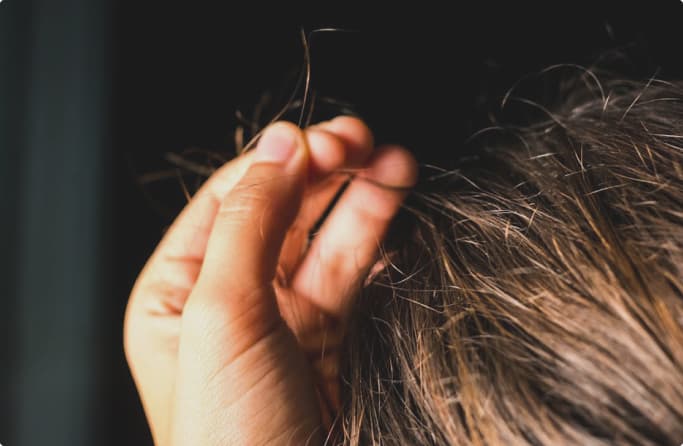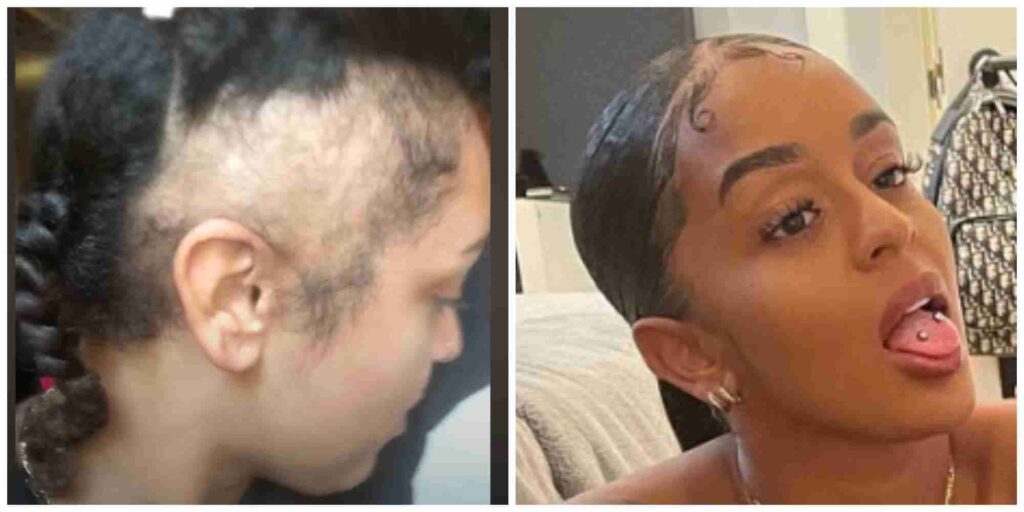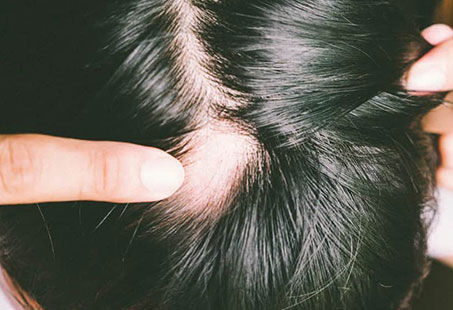Traumatic alopecia refers to hair loss due to chemical, physical or burn injury to the scalp. Depending on the source of the trauma, this kind of hair loss can be temporary or permanent.
In certain cases, it is possible to avoid trauma that causes this type of hair loss. But, you can even self-inflict trauma without realising it.
In this guide, we’ll explore what traumatic alopecia is and what you can do to treat it.
What Is Traumatic Alopecia?
Traumatic alopecia is the forceful uprooting of hair from the follicles. For instance, trichotillomania sufferers do this to themselves. In this case, the trauma is chronic, so it will repeat itself in episodes.
Moreover, there’s the possibility of forceful hair-pulling occurring as a result of physical abuse or altercation.
Traumatic alopecia can also happen due to damage to the scalp skin through blunt trauma (accidents or injuries), chemicals (dyes), heat (fire, styling tools) and electricity, among other things.
Even pressure can end up causing traumatic alopecia. For instance, it’s common for babies to develop a bald patch on the back of their scalps due to friction pressure.
Therefore, traumatic alopecia isn’t always deliberate or avoidable either.
What Are The Symptoms of Traumatic Alopecia?
Traumatic alopecia can be accompanied by the following signs and symptoms:
- Irregular-shaped bald patches
- Broken hair shafts
- Redness
- Bleeding
- Swelling
- Scarring
Symptoms can vary depending on the kind of trauma you’re experiencing. For instance, if traumatic alopecia is due to traction from tight hairstyles, it can also pustules and tenting on the skin.
How Do You Get Traumatic Alopecia?
Traumatic alopecia can happen due to any of the following:
Trichotillomania
Trichotillomania is a hair-pulling disorder. It’s a form of traumatic alopecia because the person repeatedly plucks the hair out from a particular area on the scalp, face or body. As a result, they can end up with a permanent bald spot (if it’s not managed).

It should be noted that there’s also a “trichotillomania-by-proxy.” It’s when the patient is not the one who’s plucking the hair. In fact, it’s done by someone else (a proxy). Physically abusive parents can do this to their children.
Traction Alopecia
Traction alopecia is another type of self-inflicted traumatic alopecia. Usually, tight hairstyles and accessories are blamed for it.

With traction alopecia too, it’s possible to grow your hair back if the condition is still in its early stages. However, once it’s past that, you can end up with a permanent bald patch.
Pressure-Induced Alopecia
Physical pressure can also cause hair loss due to trauma.
As mentioned above, babies temporarily lose their hair due to lying on cribs or mattresses for long periods of time.
In Skin Appendage Disorders, a study reports pressure-induced alopecia caused by lying immobilised in hospital beds during long surgery or hospital stays in ICUs.
If treated early on, it’s possible to reverse this kind of hair loss. However, it can also lead to permanent baldness (it can leave scars).
Overuse Syndrome
As the name suggests, overuse syndrome is when you damage or injure a part of your body due to overuse.
While it most commonly affects knees and feet, curiously enough, it can also cause hair loss on the scalp due to a specific reason – headspinning in breakdancing.
It’s also known as the “headspinner’s hole” and was first described in 2009 in a research published in the journal: Sportverletzung Sportschaden.
In the study, around 30% of the break dancers had experienced hair loss due to headspinning. More than 36% of them also had scalp inflammation, while 23.6% of them had painless lumps on their heads.
One case report published in the Journal of Cutaneous Medicine and Surgery also reported break dancing as a risk for scarring alopecia due to lichen planopilaris.
Therefore, this type of traumatic alopecia can also cause permanent hair loss.
Ovestyling
Hair styling tools can inadvertently cause traumatic alopecia.
Different researches on different hair tools have shown as much. One case study published in the Archives of Dermatology reported that brush rollers and even hairpins could be responsible for traumatic alopecia.

Trichorrhexis nodosa is a hair shaft disorder (can be acquired or congenital) that can make the hair break off easily. And it can also be caused by the use of hair styling tools like:
- Blow dryers
- Hot combs
- Straighteners
- Brushes (when overused)
- Excessive exposure to chemicals (like in perms)
It’s possible to reverse this kind of traumatic hair loss. However, you need to minimise trauma to the hair shafts.
Burns
A burn injury can be caused by fire, chemicals, electricity, friction, etc.
Deep enough, it can damage the tissue and leave permanent scars, which can cause permanent hair loss as well.
Plastic and reconstructive surgeries are usually done in such instances.
Injury
Physical trauma or injury from a blow to the head can also cause hair loss.
While the injury can cause traumatic alopecia, you can also lose hair due to shock to your system (telogen effluvium or alopecia areata).
This kind of hair loss can be permanent or temporary.
Is Traumatic Alopecia Permanent?
Traumatic alopecia can be permanent, but it depends on the source of the trauma, its duration and severity.
In some cases, if it’s caught early on and treated, it’s possible to reverse it and grow your hair back (could take a few months).
However, if it leaves scars and/or damages the hair follicle, you’re not likely to grow your hair back.
Can You Fix Traumatic Alopecia?
It can be possible to fix traumatic alopecia with medication, changes in lifestyle and hair practices, therapy, PRP, and/or hair transplant surgery.
Treatment depends on the kind of trauma you’ve experienced.
For trichotillomania, primary treatment is usually habit reversal training.
In the case of traction alopecia, patients are usually advised to change their hairstyles (wear them loosely). Minoxidil and platelet-rich plasma (PRP) injections can help if it’s temporary. But hair transplantation is most effective for permanent hair loss.

With pressure-induced alopecia, turning the head can help eliminate the problem.
But if you have scars from any kind of traumatic alopecia, you might be able to restore hair through surgery. Your doctor will have to assess the scars first.
Conclusion
Traumatic alopecia is something that can happen without you even knowing about it. And you might not always be able to prevent it.
However, it’s possible in certain instances, which is why it’s a good idea to be aware of what’s happening to the hair on your scalp.
Keep in mind that it can be possible to treat this kind of hair loss. However, if you have it, make sure to get in touch with a board-certified medical professional.
Reviewed and Approved by Trichologist Yaprak Yazan


